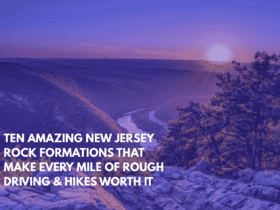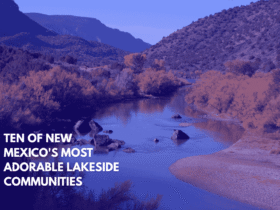After leaving North Carolina, you’ll quickly realize there are some things—both natural and cultural—that are uniquely tied to the Tar Heel State’s landscape, history, and daily life. Here are ten unexpected things you won’t see (or experience quite the same way) once you’ve crossed the state line:
1. The Dramatic Transition from Mountains to Sea
North Carolina is one of the few states where you can drive from the highest mountain peak east of the Mississippi (Mount Mitchell, 6,684 feet) to sandy Atlantic beaches in a single day, passing through three distinct regions: the Mountains, the Piedmont, and the Coastal Plain.
2. The Outer Banks and “Graveyard of the Atlantic”
This string of barrier islands, with their shifting sands, wild horses, and shipwreck-strewn waters, is unlike any other coastal region in the U.S. The Outer Banks’ treacherous waters have sunk over a thousand ships, earning the nickname “Graveyard of the Atlantic”.
3. Miles of Salt Marshes and Estuaries
The Tidewater region’s vast salt marshes, intricate estuaries, and wetlands provide habitats for wildlife and are a defining feature of North Carolina’s eastern landscape—rarely matched elsewhere.
4. Sounds Larger Than Some States
North Carolina’s Albemarle and Pamlico Sounds are the two largest landlocked sounds in the country, with Pamlico Sound being bigger than the entire state of Connecticut.
5. Longleaf Pine Forests and Tar Heel History
The state’s extensive pine forests once fueled a global naval stores industry (tar, pitch, turpentine), giving North Carolina its “Tar Heel” nickname—a legacy not found outside the region.
6. The Unique “Piedmont Plateau”
The Piedmont is a high, mostly flat plateau region with rolling hills—distinct from the flat coastal plain and the rugged mountains, and a landscape feature that’s uniquely prominent in North Carolina.
7. Mount Mitchell and the Oldest Mountains in the U.S.
You’ll miss the ancient, rounded peaks of the Blue Ridge and Great Smoky Mountains, part of the Appalachian range, which are among the oldest in North America.
8. Rivers That Change Direction at the Continental Divide
In western North Carolina, rivers split at the Eastern Continental Divide: some flow to the Atlantic, while others head toward the Gulf of Mexico—a rare hydrological feature.
9. The Mystery of the Lost Colony
Roanoke Island’s unsolved “Lost Colony” mystery is a story and historic site you won’t encounter anywhere else in the country.
10. A State Where Blackbeard Once Roamed
North Carolina’s coast was once the haunt of the infamous pirate Blackbeard, whose ship, the Queen Anne’s Revenge, ran aground near Beaufort Inlet—a tale deeply woven into local lore.
These features and stories are woven into the fabric of North Carolina and are hard to find—if not impossible to replicate—anywhere else.
Sources:
- https://en.wikipedia.org/wiki/Geography_of_North_Carolina
- https://www.sosnc.gov/divisions/publications/kids_page_geography
- https://kids.nationalgeographic.com/geography/states/article/north-carolina
- https://www.ncpedia.org/our-state-geography-snap-landforms














Leave a Reply